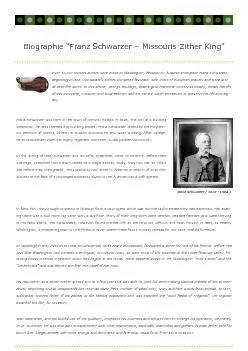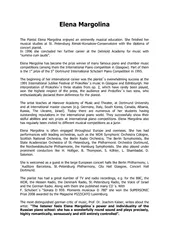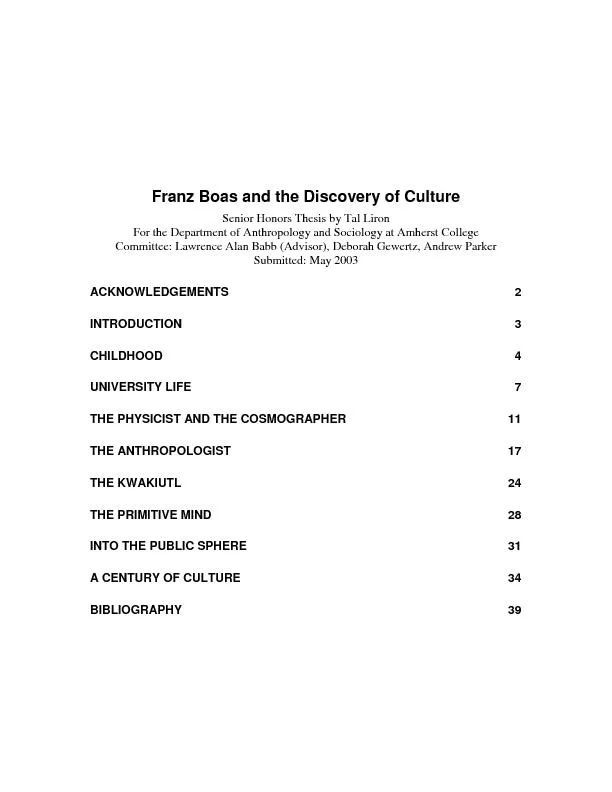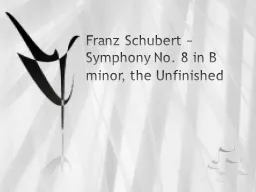PDF-Biographie “Franz Schwarzer
Author : tatyana-admore | Published Date : 2015-12-11
x2013 Missouris Zither Kingx201D Franz Schwarzer 1828 1904 Over 10000 concert zithers were made in Washington Missouri by Austrian immigrant Franz Schwarzer beginning
Presentation Embed Code
Download Presentation
Download Presentation The PPT/PDF document "Biographie “Franz Schwarzer" is the property of its rightful owner. Permission is granted to download and print the materials on this website for personal, non-commercial use only, and to display it on your personal computer provided you do not modify the materials and that you retain all copyright notices contained in the materials. By downloading content from our website, you accept the terms of this agreement.
Biographie “Franz Schwarzer: Transcript
Download Rules Of Document
"Biographie “Franz Schwarzer"The content belongs to its owner. You may download and print it for personal use, without modification, and keep all copyright notices. By downloading, you agree to these terms.
Related Documents














